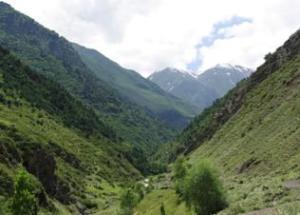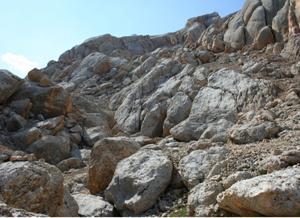Yury Yarovenko
Other projects
27 Aug 2009
Population Ecology of the Leopard (Panthera pardus) in Dagestan, Russian North Caucasus
New project will encompass habitat mapping and further camera-trapping so that to find and describe the leopard “hotspot” areas worth of urgent conservation.

One of the main canyons where leopards are frequently recorded.
During the previous Rufford projects (2008-2009 and 2009-2010) we obtained reliable information about existence of the leopard in Dagestan (SE of Russia’s Greater Caucasus Ridge). New project will encompass habitat mapping and further camera-trapping so that to find and describe the leopard “hotspot” areas worth of urgent conservation. The project team will purchase 10 camera-traps to supplement the devices used before during the 2nd Rufford project. Local capacities will be built through technical assistance (provision of binoculars) and awareness raising (local guides, wall calendars, DVD digest). All project activities and results will be widely publicized through mass media.

The upper Samur River.
A significant part of project time, money and efforts will be spent to build local capacities in terms of knowledge sharing, participation of local guides in field surveys, technical assistance to local rangers and activists, and the build-up of project team’s resources. The electronic DVD illustrated digest will be produced to comprehensively describe leopard biology, ecology, habitats, threats and conservation solutions in Dagestan. It will be freely distributed among all interested parties and also provided to Rufford Small Grants Programme for free download from its website.

The scree on the Mount Shalbuzdag.
These efforts will be used to promote the establishment of new protected area(s) which would cover at least 50% of known leopard habitats in Dagestan. We also envisage the involvement of international donors who become more and more interested in leopard conservation in Dagestan. Production and practical use of GIS maps of leopard habitats will greatly facilitate the processes of protected area planning, mobilization of human resources, and fundraising. As the principal stakeholders of leopard conservation, local communities and authorities will be an indispensable part of the entire process.